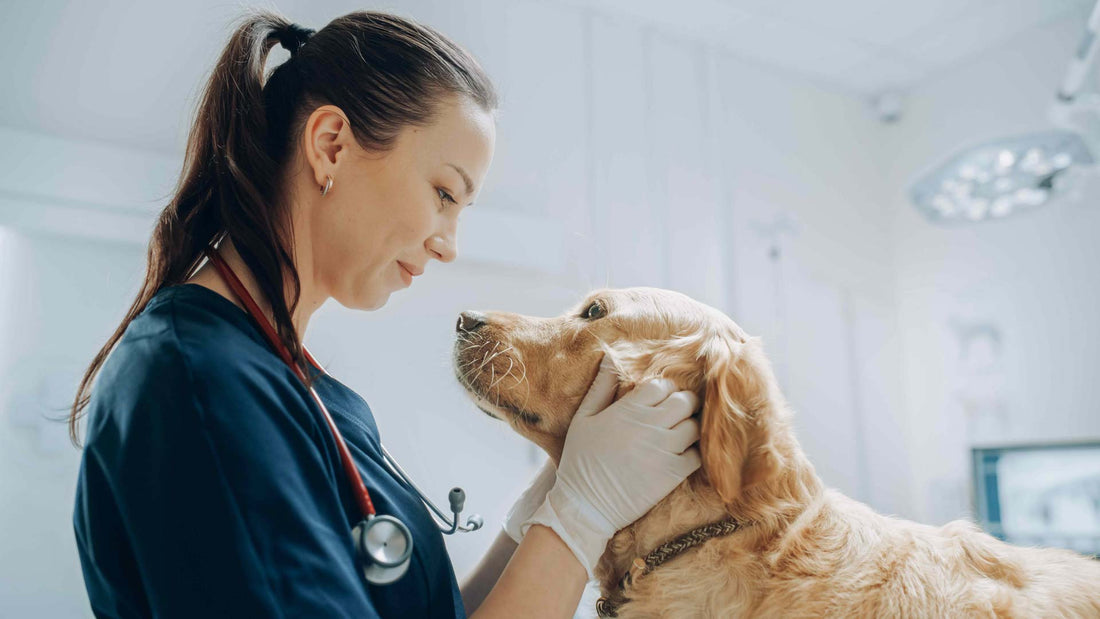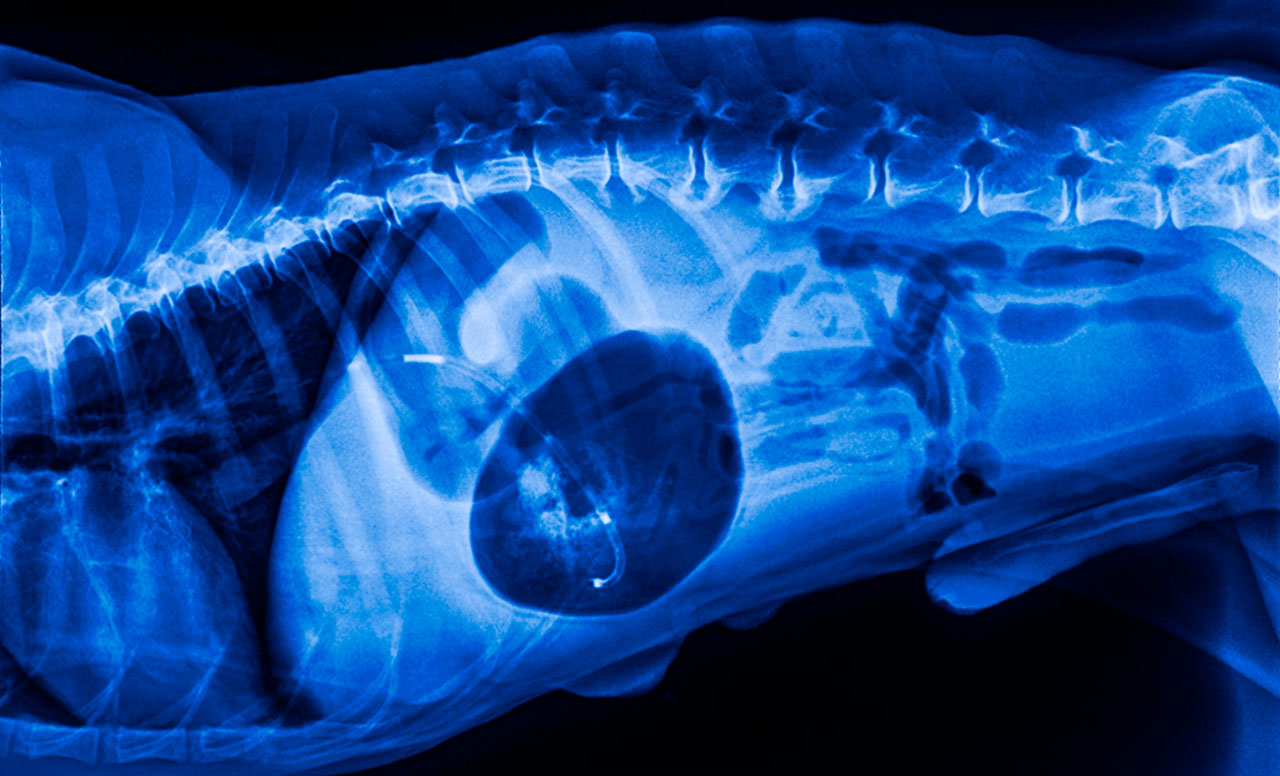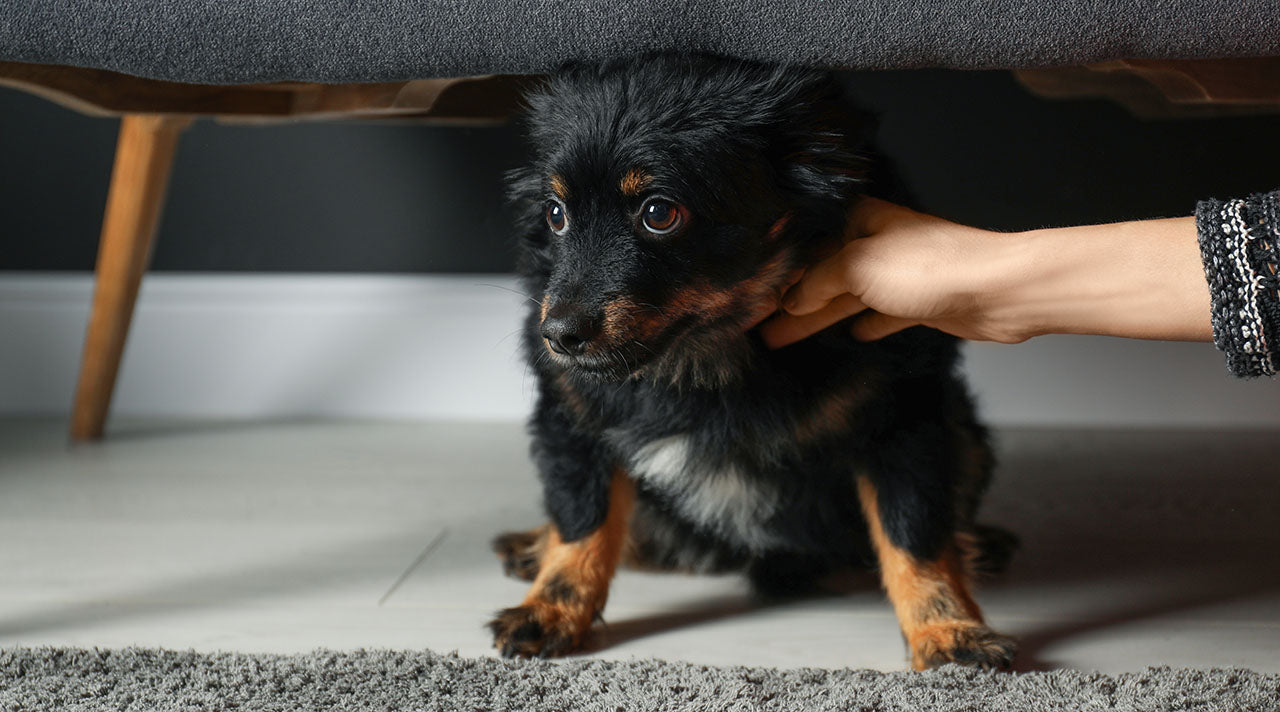Gastric torsion (gastric dilatation-volvulus – GDV) is always a life-threatening emergency and one of the worst nightmares for every dog owner. This makes it all the more important to deal with this issue in order to be able to recognize the emergency and know what to do in this case.
The Dog's Stomach - Anatomical Excursion
To understand what happens during gastric torsion, we need to briefly look at the anatomy of the dog's stomach.
You can imagine the dog's stomach as a muscular, asymmetrical pouch. This "stomach pouch" is essentially only attached at two points and hangs, so to speak, between the esophagus and the duodenum. The dog's stomach can therefore swing back and forth freely.
There are additional ligaments that connect the stomach to other parts of the abdominal cavity, such as the liver and spleen. These do not fix the stomach in place, however, but are flexible. This ensures that the stomach has enough freedom of movement at different levels of fullness.
What is gastric torsion anyway?
Gastric torsion in dogs (also known as gastric torsion or gastrotorsion) is life-threatening. The dog's stomach rotates clockwise by 90 to 360 degrees around its longitudinal axis.
This leads to a constriction of the stomach entrance and exit. Even small amounts of food develop gases in the stomach during the digestion process, which cannot be released in this state and cause the stomach to swell up like a balloon. The constriction and bloating of the stomach impairs breathing and heart reaction. In addition, blood vessels are compressed and constricted. The stomach wall and other vital organs no longer receive sufficient blood flow. This in turn leads to tissue death.
The spleen is often rotated when the stomach twists. Due to the resulting damage to the spleen tissue, the spleen often has to be removed during surgery.
Life-threatening circulatory disorders and cardiac stress can develop very quickly, leading to circulatory shock. Panic and severe pain further worsen the situation. The mortality rate for gastric torsion is 15-33%.
How does gastric torsion occur in dogs?
The exact causes of gastric torsion in dogs are not yet fully understood and are not always clear, as it is influenced by various factors:
- previous strong gas accumulation in the stomach
- edible and difficult to digest food
- indigestion / gastric emptying disorder
- Playing and romping with a full stomach
- Feeding large portions / overeating
- intake of a lot of water
- swallowing air
- stress
Since the stomach is essentially only attached at two points, the stomach swings during certain movements (jumping, romping, braking, rolling), especially when it is full, and can then rotate around its own axis.
The previous points can be possible causes of danger. However, stomach torsion can also occur when the stomach is barely full and during periods of rest.
Which dogs are particularly at risk?
Gastric torsion occurs more frequently in large dogs with deep, narrow chests and loose gastric bands, as this gives the stomach more room to move.
This includes, for example,
- Great Danes
- Irish Wolfhounds
- German Shepherds
- boxer
- Bernese Mountain Dogs
- setter
Great Danes, for example, have an approximately 30% risk of developing gastric torsion.
In addition, dogs with soft and loose connective tissue or weak connective tissue are often affected because this also gives the stomach more room to move.
Symptoms of gastric torsion
- Moment of rotation causes brief pain (short howl)
- Abdominal pain (sucked-in stomach, curved/arched back)
- restlessness (restless, panting)
- unsuccessful vomiting/choking
- increasing abdominal circumference
- whistling/groaning of pain
- salivation
- shortness of breath
- heart palpitations
- weak pulse
- pale mucous membranes
- circulatory weakness
- shock
Gastric torsion – what to do?
Go to the vet immediately! Without treatment, gastric torsion will lead to death within a few hours. The sooner the dog is treated, the better the chances of survival. If gastric torsion is suspected, no time should be wasted. The vet should be informed by telephone in advance to clarify whether an operation can be carried out and appropriate preparations made.
The main focus of treatment for gastric torsion is to combat shock and stabilize the circulation. Gas and stomach contents can be removed using a gastric tube, thereby reducing the pressure in the stomach. Gases can also be released using a gastric puncture.
Surgery is unavoidable in most cases. Since dogs that have already had gastric torsion have an 80% recurrence rate, this procedure often involves fixing the stomach to the abdominal wall to prevent future torsion.
Gastric torsion often occurs in the evening and at night. For this and other emergencies, it is therefore advisable to have the addresses and telephone numbers of emergency veterinarians and animal clinics ready as a precautionary measure, so as not to waste unnecessary time researching.
3 Tips - How do I prevent gastric torsion?
As already mentioned, the exact causes of gastric torsion are not known and appropriate preventive measures are unfortunately not guaranteed. Nevertheless, the following should be taken into account for dogs that are prone to gastric torsion due to genetic predisposition:
- The total amount of food should be divided into two to three portions and not fed in increased amounts.
- When choosing food, you should make sure that it is easily digestible. The best option here is grain-free dog food .
- In addition, a rest period of at least 1 – 2 hours should be observed after eating.


























